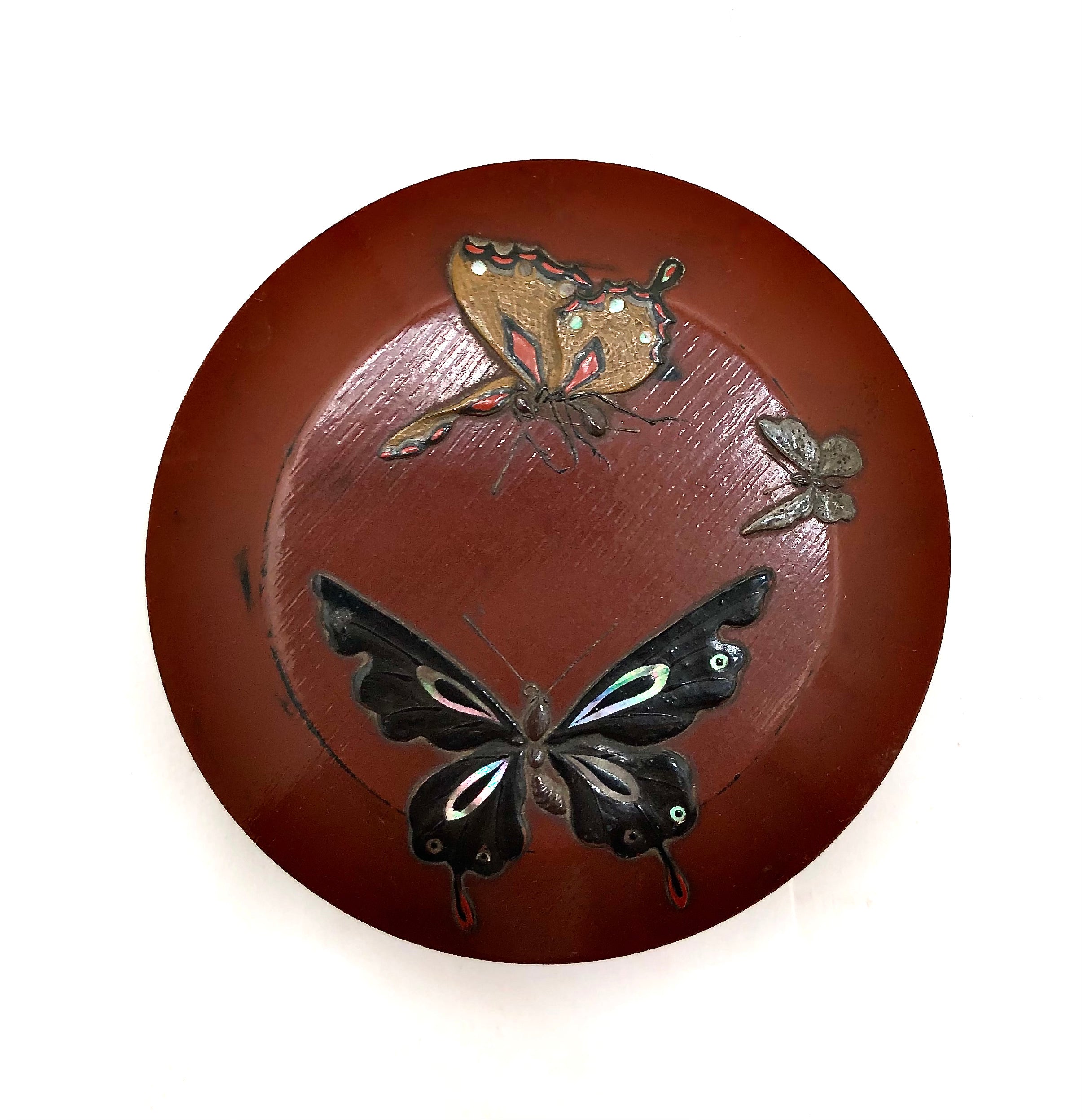
Vintage Japanese Lacquer Incense Box with Butterfly Motif Lid
Dimensions: 1/4"h x 3-0"dia
Fine and thin wood lacquer Kogo, (incense box), in which the lid is ornamented with a beautiful detailing of three butterflies using the hiramaki-e, (low relief carving). The design is made with multiple lacquer layers and mother-of-pearl, creating a three-dimensional motif and polished to the desired effect. Specifically made for use during the tea ceremony. The piece is unsigned.
Incense arrived in Japan beginning with Buddhism in the sixth century. Incense experienced in temples during Buddhist ceremonies must have inspired Japanese (who could afford it) to burn incense in their homes, not only to commemorate ancestors, deities, and important life events, and to show they were sophisticated. Houses were scented, clothes were hung in ways and places to absorb incense aromas, kimono were stored with incense packets to keep away “critters” and hair was perfumed. Powdered incense was considered "cleansing”, and was used on the palms, head, and sprinkled on floors (a great practice for temples that required a 'no-footwear' policy), and used today for meditation and to calm the mind. Beautiful containers of all sizes and materials were handcrafted honoring the importance of incense throughout the Asian cultures.
NOTE: For more information about Japanese boxes and lacquer see our blogs: https://mingeiarts.com/blogs/celebration-of-mingei-journey-through-japan/kogo-incense-containers-open-the-atmospheric-paths-of-creativity-socialization, and https://mingeiarts.com/blogs/celebration-of-mingei-journey-through-japan/lacquerwork-an-important-intangible-ancient-art, as well as https://mingeiarts.com/blogs/celebration-of-mingei-journey-through-japan/the-craft-of-the-japanese-bako-a-box-needs-a-purpose.
Vintage Condition: Excellent as originally made. “As is” with no effects from aging, and retains the original craft/workmanship. Any discoloration, chipping/cracking, surface wear, or structural damage is noted.
